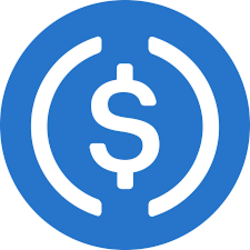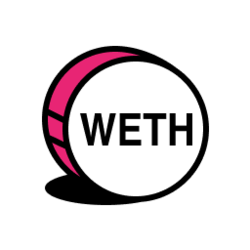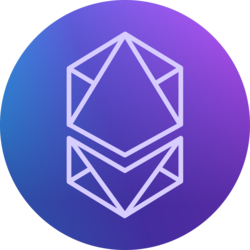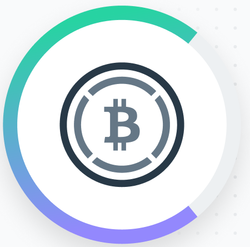Imagine for a moment that the internet is like a bustling highway filled with cars, each representing a unique cryptocurrency transaction. Now, what happens when the traffic gets too heavy, and everything starts to slow down? That’s the kind of situation many blockchains are grappling with today—a challenge known as scalability. As more and more people dive into the world of crypto and decentralized apps (dApps), it’s crucial to understand why scalability matters. It’s not just a techy term for industry insiders; it’s the backbone that allows everything to run smoothly and efficiently.
So, why should you pay attention to blockchain scalability, especially if you’re a student or an early-career professional brimming with potential? Well, grasping these concepts can really differentiate you in the fast-paced world of cryptocurrencies. This knowledge isn’t just reserved for seasoned pros; it’s a valuable piece of understanding that could set you on the path to success in the digital finance landscape.
Let’s break it down: blockchain scalability is simply about how well a blockchain can manage a growing volume of transactions. Think of it like a busy restaurant. If they can only seat a limited number of customers, you’ll end up waiting for your table, and if too many hungry patrons arrive at once, the food service might get sluggish or even chaotic. If a blockchain can’t handle more users and their transactions efficiently, it risks slowing down—making trading or using dApps a frustrating experience. Nobody wants that!
Now, let’s look at some cool solutions that help tackle these scalability challenges. First off, there are Layer 2 solutions. You can think of them as express lanes on that busy highway, allowing for smoother and faster traffic flow. Solutions like rollups and state channels bundle multiple transactions together, making processing quicker without disrupting the core blockchain. It’s like having a VIP lane for transactions—everyone gets where they’re going faster!
Then there are sidechains, which act like parallel highways that run alongside the main one. They can process transactions independently, relieving some of the congestion on the main blockchain. This means that dApps can operate more efficiently without overloading the network, keeping things fast and reliable.
Another super interesting scalability method is sharding. Imagine dividing that highway into multiple lanes, with each lane handling its own stream of traffic. In blockchain, sharding breaks the network into smaller, manageable portions that can work on transactions simultaneously. Fewer bottlenecks mean everything can happen much quicker, leading to a much better user experience.
Now, let’s chat about how different consensus mechanisms can also improve scalability. Traditional systems often rely on Proof-of-Work (PoW), which can be like a slow-moving train—great but not always efficient. Many newer networks are shifting to Proof-of-Stake (PoS), which allows for faster processing without burning so much energy. It’s a win-win, benefiting both the users and the environment.
And let’s not overlook the importance of blockchain interoperability. If you’ve ever tried to navigate between different banking systems or platforms, you know how cumbersome it can be if they don’t communicate. Cross-chain technology aims to bridge these gaps, allowing different blockchains to work together and making transactions smoother across networks.
As you explore the thrilling world of blockchain scalability, it’s also essential to arm yourself with some best practices. Staying curious and keeping an ear to the ground about the latest trends is super important. The crypto space is always evolving, and staying informed can help you make savvy decisions moving forward. Platforms like Coinbase or Binance Lite are perfect for dipping your toes into the blockchain waters. And don’t forget about the power of community! Engage with folks on forums like Reddit or Discord to share insights and get support—you’re not in this alone.
And if you’re curious about decentralized applications (dApps), understanding how to scale technology for these is crucial. dApps are like the new-age apps that do their magic on the blockchain instead of traditional servers. As these applications gain traction, the demand for effective scalability is only going to grow. Companies that can seamlessly improve scalability while working with dApps will likely be the leaders of this crypto revolution.
Looking ahead, exciting trends are shaping the future of blockchain scalability, like layer 3 protocols and AI-powered consensus solutions. These advancements are set to transform how we interact with blockchain technology, making it not only faster but also cheaper and more accessible to everyone around the globe.
So, why is this all important? Scalability isn’t just a passing trend; it’s a foundational element that affects how usable and effective blockchain technology can be. By familiarizing yourself with these essential solutions, you’re not just collecting knowledge—you’re equipping yourself for success in the ever-evolving crypto landscape.
Don’t be intimidated! Taking those first steps into understanding these concepts opens up a world of exciting possibilities. Dive headfirst into the available resources, connect with the growing community around you, and soon enough, you’ll find yourself confidently exploring the vast realm of blockchain technology.
In this endless digital universe where opportunities are at your fingertips, being informed is your best tool. Whether you’re an aspiring crypto investor or simply tech-curious, remember that each piece of knowledge you gather today contributes to your larger journey towards financial freedom and innovation. So let’s embark on this adventure together, learn together, and grow together in this captivating space!



























































































































